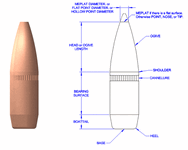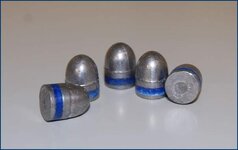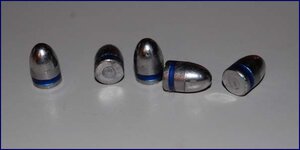- Messages
- 1,065
- Reactions
- 1,059
So I'm trying out some flat points and can't get them to pass the plunk test in my 1911.i colored a round with a sharpie and put it in the barrel it seems it's rubbing on the bullet itself and not the case.my books give a minimum oal of 1.200 if I take it down to 1.1900 it will fall in and out but I don't really want to chance over pressuring the round.could it just be my 1911 doesn't like those type of bullets.i also tried it with and without the crimp.going to try it in my buddies Jericho 45 tomorrow and see what happens.just wondering if anyone else has any ideas what I could try.














